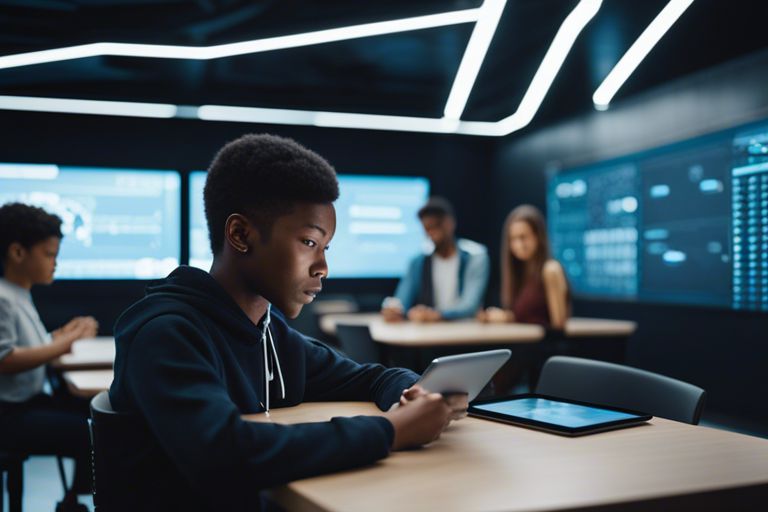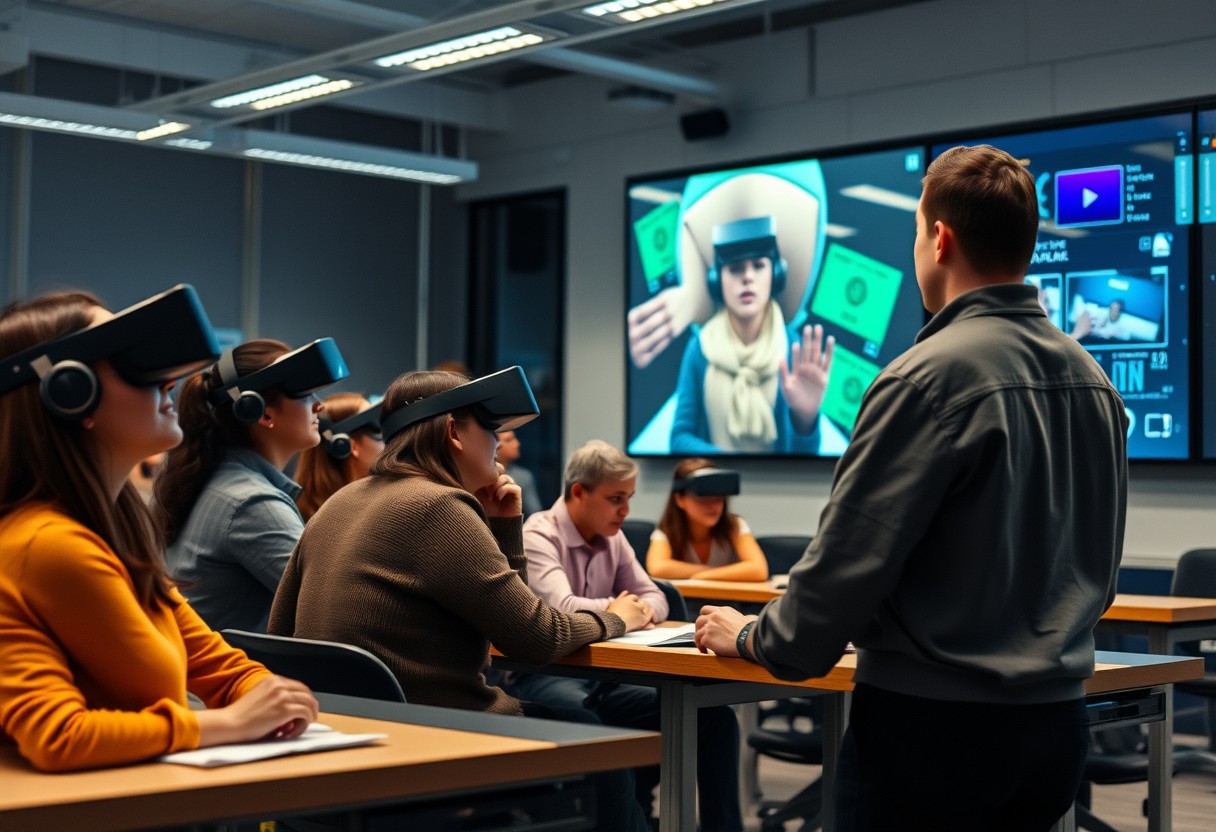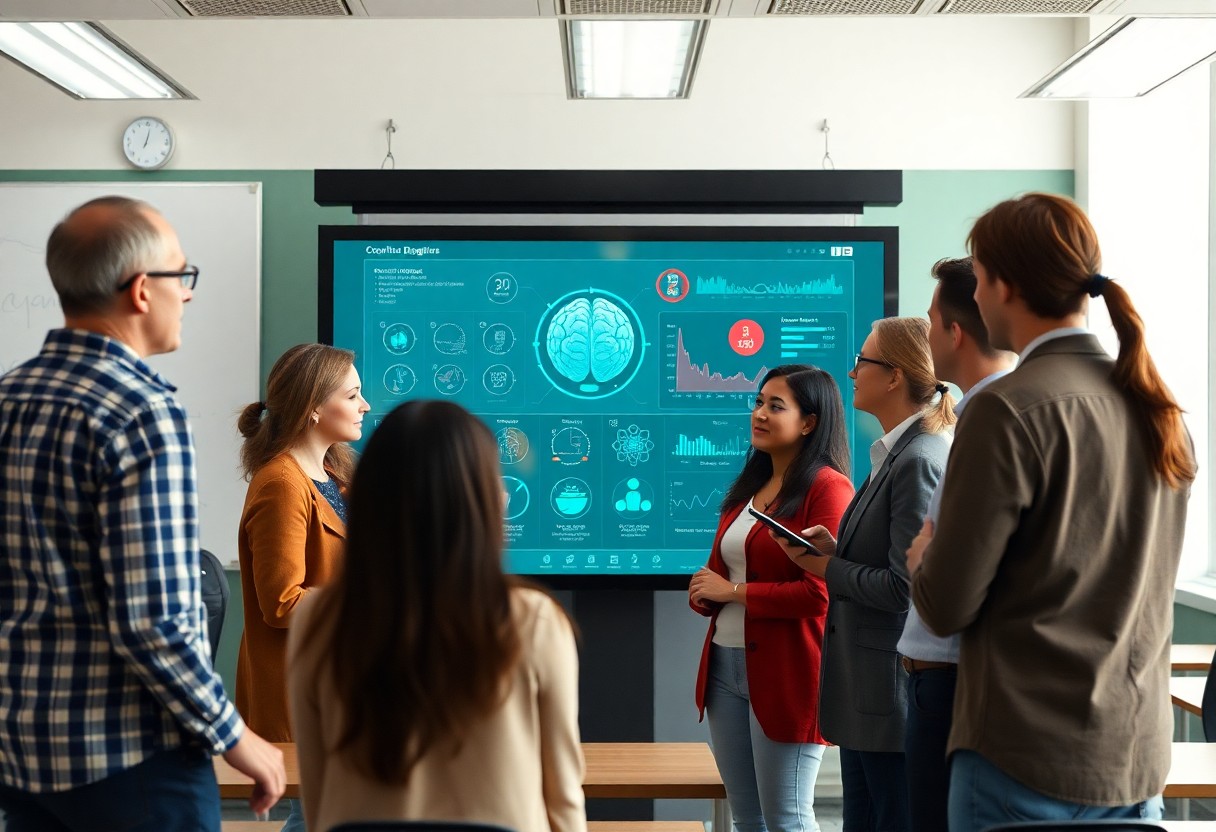Many educators are turning to AI-powered tutoring systems to revolutionize the way students learn. These advanced technologies offer personalized learning experiences, instant feedback, and adaptability to individual learning styles. By harnessing the power of AI algorithms, students can enjoy a more efficient, effective, and engaging learning process. In this blog post, we will explore how educators can leverage AI-powered tutoring systems to enhance student learning and improve academic outcomes.
Understanding the Fundamentals of AI-Powered Tutoring Systems
How AI Technology is Revolutionizing Education
An AI-powered tutoring system is a technology that uses artificial intelligence to simulate one-on-one personalized tutoring for students. This revolutionary technology has the potential to transform the way students learn by providing individualized support and feedback based on their unique learning styles and needs.
The Science Behind Intelligent Tutoring Systems
If you probe deeper into the science behind intelligent tutoring systems, you will find that they utilize machine learning algorithms to analyze student data and adapt their teaching strategies accordingly. This personalized approach helps students stay engaged, motivated, and ultimately leads to better learning outcomes.
This adaptive learning is one of the key features of intelligent tutoring systems, allowing them to tailor the learning experience to each student’s strengths and weaknesses. By analyzing data in real-time, these systems can identify areas where a student is struggling and provide additional support and practice exercises to help them overcome challenges.
Identifying the Benefits of AI-Powered Tutoring Systems
Personalized Learning Experiences for Students
Even before the age of AI-powered tutoring systems, personalizing learning experiences for each student was a challenge. With AI-powered tutoring systems, this has become not only possible but highly effective. These systems can analyze students’ strengths, weaknesses, learning styles, and pace to create personalized learning pathways that cater to individual needs.
Enhanced Student Engagement and Motivation
Motivation is a key factor in student learning, and AI-powered tutoring systems can significantly enhance it. These systems use data analytics to track students’ engagement levels, assess their progress, and provide real-time feedback, keeping students motivated and engaged in their learning.
Student engagement and motivation are critical for successful learning outcomes. AI-powered tutoring systems can deliver content in interactive and stimulating ways, making learning more engaging and motivating for students.
Increased Efficiency for Teachers and Educators
For teachers and educators, time is a valuable resource. AI-powered tutoring systems can help in streamlining administrative tasks, grading assignments, and even providing insights into each student’s progress. This increased efficiency allows educators to focus more on personalized instruction and mentoring, ultimately improving the overall quality of education.
AI-powered tutoring systems can provide teachers with valuable data and analytics that can inform their teaching strategies and help them identify areas where students may need additional support. This data-driven approach can lead to more effective teaching methods and better learning outcomes for students.

How to Implement AI-Powered Tutoring Systems in the Classroom
Tips for Selecting the Right AI-Powered Tutoring Platform
For schools considering implementing AI-powered tutoring systems in the classroom, selecting the right platform is crucial. It’s imperative to choose a system that aligns with your school’s goals and curriculum while providing personalized learning experiences for students.
- Consider the adaptability of the platform to different learning styles.
- Look for platforms that offer real-time feedback and assessment.
- Ensure the platform has robust data security and privacy measures in place.
After careful consideration, schools can make an informed decision on the AI-powered tutoring platform that best suits their needs.
Strategies for Integrating AI Technology into Existing Curricula
One effective way to integrate AI technology into existing curricula is by starting with small pilot programs or specific subjects to test the effectiveness of the technology. This allows teachers and students to familiarize themselves with the AI-powered tutoring systems gradually.
Now, by incorporating AI into existing lesson plans, educators can leverage the technology to supplement traditional teaching methods, providing more personalized learning experiences for students.
Factors to Consider When Deploying AI-Powered Tutoring Systems
Understanding the key factors is imperative for successful deployment of AI-powered tutoring systems. Schools must consider aspects such as the technical capabilities of their staff, the compatibility of the system with existing infrastructure, and the support needed for teachers and students to adapt to the new technology.
- Evaluate the scalability of the AI-powered tutoring system for future growth.
- Assess the training and support provided by the platform for teachers and students.
Systems that take these factors into account are more likely to achieve successful integration and implementation in the classroom, leading to enhanced student learning outcomes.
The Role of AI in Adaptive Learning
How AI Adapts to Individual Student Needs
Despite the challenges faced in traditional classroom settings, AI-powered tutoring systems have the capability to adapt to individual student needs seamlessly. AI algorithms analyze student performance and behavior to personalize the learning experience. By tracking progress, identifying strengths and weaknesses, and adjusting the difficulty level of tasks, AI ensures that each student receives tailored support that meets their unique requirements.
The Benefits of Real-Time Feedback and Assessment
For students, real-time feedback is invaluable as it provides immediate insights into their understanding of the material. AI-powered tutoring systems offer instant feedback and assessment, allowing students to address misunderstandings promptly. This timely guidance not only reinforces learning but also helps students stay engaged and motivated throughout their educational journey.
With AI monitoring their progress, students can pinpoint areas that require improvement and focus their efforts accordingly. This level of personalized guidance enhances the learning process and empowers students to take control of their education.
Creating a Dynamic Learning Environment with AI
Another significant advantage of AI-powered tutoring systems is the ability to create a dynamic learning environment that adapts to the needs of each student. By offering interactive lessons, personalized recommendations, and additional resources based on individual performance, AI fosters active engagement and deep understanding of the material.
With AI, educators can also gain valuable insights into student progress and performance trends, enabling them to make informed decisions and provide targeted support where needed. This dynamic learning environment fosters collaboration and encourages critical thinking skills crucial for student success in the digital age.
Enhancing Student Outcomes with AI-Powered Tutoring Systems
How AI-Powered Tutoring Systems Improve Student Grades
There’s no denying the positive impact AI-powered tutoring systems can have on student grades. These systems use algorithms to identify areas where students are struggling and provide personalized lessons to help them improve. By offering tailored instruction based on individual learning styles and pace, students can grasp concepts more effectively and see an improvement in their grades.
The Impact of AI on Student Retention and Dropout Rates
Student retention and dropout rates are critical factors in measuring the success of educational programs. AI-powered tutoring systems play a significant role in improving these rates by offering continuous support to students. Personalized feedback, progress tracking, and timely interventions help students stay engaged and motivated to continue their education.
Impact: With the integration of AI technologies, educational institutions can see a decrease in dropout rates and an increase in student retention. This not only benefits individual students in their academic journey but also contributes to the overall success of the institution.
Factors Influencing the Effectiveness of AI-Powered Tutoring Systems
AIPowered tutoring systems can be highly effective when certain factors are taken into consideration. Some key factors that influence the effectiveness of these systems include personalization, real-time feedback, and adaptive learning techniques. Any implementation of AI-powered tutoring systems should prioritize these factors to maximize their impact.
- Personalization: Tailoring lessons to individual student needs.
- Real-time feedback: Providing instant assessment and guidance.
- Adaptive learning techniques: Adjusting content based on student progress.
Overcoming Common Challenges in AI-Powered Tutoring Systems
Addressing Concerns About Job Replacement and Automation
An important concern surrounding AI-powered tutoring systems is the fear of job replacement and automation in the education sector. However, it is crucial to understand that these systems are designed to support and enhance the work of educators rather than replace them. AI can automate routine tasks such as grading and provide personalized learning experiences, allowing educators to focus more on complex tasks like mentoring and guiding students.
Ensuring Equity and Accessibility in AI-Powered Tutoring Systems
Ensuring equity and accessibility in AI-powered tutoring systems is imperative to prevent further marginalization of disadvantaged groups. By designing inclusive interfaces, providing multiple language options, and offering support for different learning styles, AI systems can cater to a diverse range of students. Additionally, ensuring data privacy and security measures are in place can help build trust among users.
Automation plays a crucial role in making learning resources more accessible to students from varying backgrounds. By utilizing AI to personalize content and provide tailored support, students can benefit from a more inclusive learning experience.
Mitigating the Risks of Bias in AI-Driven Education
Bias in AI-driven education systems is a significant concern that needs to be addressed. Steps must be taken to mitigate bias in algorithms, data collection, and decision-making processes. Regular audits, diverse development teams, and transparent reporting can help identify and rectify biased outcomes.
About providing equal opportunities and fair treatment to all students, AI-powered tutoring systems must continuously strive to eliminate bias and promote diversity in educational settings.
How to Train Teachers to Effectively Use AI-Powered Tutoring Systems
Once again, the success of AI-powered tutoring systems in enhancing student learning hinges on how effectively teachers can utilize these tools in the classroom. Training teachers to leverage AI-powered tutoring systems can significantly impact their effectiveness and improve student outcomes. Here are some key strategies for training teachers to effectively use AI-powered tutoring systems:
Strategies for Professional Development and Training
Effectively integrating AI-powered tutoring systems into teaching practices requires comprehensive professional development and training programs for educators. These programs should focus on familiarizing teachers with the technology, its features, and how to leverage it to personalize learning experiences for students successfully.
Best Practices for Teacher-AI Collaboration
Strategies for effective teacher-AI collaboration include emphasizing the role of AI as a support tool rather than a replacement for teachers. Educators should be encouraged to work alongside AI systems to provide personalized learning experiences, offer timely interventions, and analyze student data to make informed instructional decisions.
With proper training and guidance, teachers can harness the power of AI-powered tutoring systems to improve student engagement, boost academic performance, and provide more tailored support to individual learners.
The Importance of Ongoing Support and Resources
Effectively supporting teachers in their use of AI-powered tutoring systems requires a commitment to providing ongoing support and access to resources. This includes regular professional development opportunities, technical assistance, and updates on the latest advancements in AI technology.
Support from administrators, instructional coaches, and technology specialists is crucial for ensuring that teachers feel confident and equipped to effectively integrate AI-powered tutoring systems into their teaching practices.
The Future of Education with AI-Powered Tutoring Systems
Emerging Trends and Innovations in AI-Driven Education
Education is evolving with the integration of AI-powered tutoring systems. These systems are revolutionizing how students learn by providing personalized learning experiences tailored to individual needs. Unlike traditional classroom settings, AI-powered tutoring systems can adapt to each student’s pace and style of learning, allowing for a more efficient and effective learning process. With advancements in natural language processing and machine learning, these systems can provide instant feedback, adaptive lesson planning, and even emotional support to enhance student engagement.
The Potential for AI to Transform the Education Sector
Potential applications of AI in education are far-reaching and transformative. AI-powered tutoring systems have the potential to bridge learning gaps, improve retention rates, and increase overall student performance. By analyzing vast amounts of data on student learning patterns and behavior, these systems can provide actionable insights to educators, enabling them to make informed decisions to optimize teaching strategies and curriculum design.
Emerging technologies like AI can also help address challenges such as teacher shortages and resource constraints by providing scalable and cost-effective solutions for personalized education. By complementing traditional teaching methods with AI-driven tools, the education sector can create a more inclusive and effective learning environment for students of all backgrounds and abilities.
Preparing Students for an AI-Driven World
Students today are growing up in a digital age where AI technologies are becoming increasingly prevalent in all aspects of society. It is crucial to prepare students for an AI-driven world by equipping them with the skills and knowledge needed to thrive in a rapidly changing workforce. AI-powered tutoring systems can help students develop critical thinking, problem-solving, and adaptability skills that are crucial for success in the 21st century.
Future advancements in AI-driven education have the potential to revolutionize the way students learn and educators teach. By leveraging AI-powered tutoring systems, the future of education is poised to be more personalized, efficient, and impactful, preparing students to excel in an increasingly AI-driven world.
How to Measure the Effectiveness of AI-Powered Tutoring Systems
Key Performance Indicators (KPIs) for AI-Powered Tutoring Systems
Keep track of key performance indicators (KPIs) to measure the effectiveness of AI-powered tutoring systems. KPIs such as student engagement levels, learning outcomes, retention rates, and time spent on tasks can provide valuable insights into the impact of AI on student learning. By analyzing these metrics, educators can assess the effectiveness of the AI tutoring system and make informed decisions to optimize student learning experiences.
Methods for Evaluating the Impact of AI on Student Learning
Now, it is important to implement methods for evaluating the impact of AI on student learning. This can include conducting pre and post-assessments, comparing performance data between students using AI tutoring systems and those who are not, and gathering feedback from both students and educators. These methods help in understanding how AI is influencing student learning outcomes and can guide further improvements in the tutoring system.
It is crucial to leverage data analytics to inform instructional design when evaluating the effectiveness of AI-powered tutoring systems. By analyzing student performance data, educators can identify patterns, trends, and areas of improvement. This data-driven approach enables personalized learning experiences, adapts teaching strategies, and enhances overall student outcomes.
Using Data Analytics to Inform Instructional Design
Student data collected from AI-powered tutoring systems can provide valuable insights into student learning behaviors, preferences, and areas of strength and weakness. Educators can use this data to tailor instructional materials, provide targeted interventions, and create personalized learning paths for each student. By incorporating data analytics into instructional design, educators can improve the effectiveness of AI tutoring systems and optimize student learning outcomes.
Factors Influencing the Adoption of AI-Powered Tutoring Systems
Now, let’s explore the various factors that influence the adoption of AI-powered tutoring systems in educational settings. These factors play a crucial role in determining the success and effectiveness of integrating AI technologies into teaching and learning processes. Some of the key factors include…
- The Role of Policy and Regulation in AI-Driven Education
- The Impact of Budget and Resource Constraints on AI Adoption
- Addressing Concerns About Data Privacy and Security
The Role of Policy and Regulation in AI-Driven Education
Even with the advancements in AI-driven education, policy and regulations play a significant role in shaping the adoption of AI-powered tutoring systems. Educational institutions need to navigate through legal frameworks, ethical guidelines, and data protection laws to ensure compliance and ethical use of AI technologies in the classroom.
After setting up clear policies and regulations, institutions can confidently integrate AI-powered systems, knowing they are aligned with legal requirements and ethical standards.
The Impact of Budget and Resource Constraints on AI Adoption
If educational institutions face budget and resource constraints, the adoption of AI-powered tutoring systems may be hindered. Implementing AI technologies requires significant investments in infrastructure, training, and ongoing maintenance. Institutions must carefully assess their financial capabilities and resource availability before committing to AI adoption.
Constraints in budget and resources can lead to limited access to cutting-edge AI technologies, training opportunities for educators, and technical support, ultimately impacting the successful implementation and scalability of AI-powered tutoring systems.
Addressing Concerns About Data Privacy and Security
AIPowered tutoring systems often collect and analyze large amounts of student data to personalize learning experiences and provide accurate feedback. With this comes concerns about data privacy and security. Educational institutions must prioritize data protection measures, secure storage practices, and transparent data usage policies to build trust with students, parents, and educators.
Plus, collaborating with data privacy experts, implementing encryption protocols, and conducting regular audits can strengthen the overall data security framework of AI-powered tutoring systems, reassuring stakeholders of their information’s safety and confidentiality.
How to Create Engaging and Interactive AI-Powered Learning Experiences
Not only can AI-powered tutoring systems provide personalized learning experiences, but they can also offer engaging and interactive content to enhance student learning. By incorporating immersive and interactive features, educators can create a more dynamic learning environment that keeps students motivated and actively engaged in their lessons.
Strategies for Developing Immersive and Interactive Content
AIPowered tutoring systems can utilize a variety of strategies to develop immersive and interactive content. This can include incorporating multimedia elements such as videos, animations, and interactive simulations to help students visualize complex concepts. Additionally, gamified elements like quizzes, challenges, and rewards can make learning more enjoyable and encourage active participation.
The Importance of Gamification and Simulation in AI-Powered Learning
An imperative aspect of AI-powered learning is the integration of gamification and simulation. Gamification involves adding game-like elements such as points, levels, and badges to educational content, making it more engaging and motivating for students. Simulations, on the other hand, allow students to experiment with real-world scenarios in a risk-free environment, enhancing their problem-solving skills and critical thinking abilities.
Simulation exercises can range from virtual science experiments to simulated business scenarios, offering students practical learning experiences that prepare them for real-life challenges. By immersing students in interactive simulations, AI-powered tutoring systems can help them apply theoretical knowledge in a hands-on, engaging way.
Tips for Designing AI-Powered Learning Environments
On top of gamification and simulation, here are some tips for designing AI-powered learning environments:
- Personalization: Tailor the learning experience to each student’s individual needs and preferences.
- Interactivity: Provide opportunities for students to actively engage with the content through interactive exercises and assessments.
- Feedback: Offer real-time feedback and guidance to help students track their progress and improve their performance.
Assume that implementing these tips will result in a more effective and engaging AI-powered learning experience for students.
The Potential of AI-Powered Tutoring Systems for Special Education
How AI Can Support Students with Disabilities
All students, regardless of their abilities, deserve access to quality education. AI-powered tutoring systems have the potential to revolutionize the way students with disabilities learn and excel in academic settings. These systems can provide personalized learning experiences tailored to individual students’ needs, allowing for a more inclusive educational environment.
The Benefits of AI-Powered Tutoring Systems for English Language Learners
On top of providing support for students with disabilities, AI-powered tutoring systems can also be incredibly beneficial for English Language Learners (ELL). These systems can offer personalized language learning experiences that cater to the unique needs of ELL students, helping them improve their language proficiency at their own pace.
Supported by AI algorithms that analyze students’ strengths and weaknesses, these tutoring systems can provide targeted exercises and feedback to enhance language skills. This personalized approach can boost ELL students’ confidence and motivation, leading to better academic outcomes in language acquisition.
Addressing the Needs of Gifted and Talented Students with AI
Addressing the needs of gifted and talented students is just as important as supporting students with disabilities. AI-powered tutoring systems can cater to the unique learning styles and accelerated pace of these students, offering advanced coursework and enrichment activities to keep them engaged and challenged in their academic pursuits.
Talented students can benefit from personalized learning paths designed to cultivate their strengths and interests, helping them reach their full potential. Moreover, AI can provide immediate feedback and adaptive learning experiences that adjust to each student’s proficiency level, ensuring that gifted learners are continually stimulated and making progress.
The Ethics of AI-Powered Tutoring Systems in Education
The Importance of Transparency and Accountability in AI-Driven Education
Many ethical considerations need to be taken into account when implementing AI-powered tutoring systems in education. Transparency and accountability are critical in ensuring that such systems are fair and effective. Students, educators, and parents must have a clear understanding of how AI algorithms operate, make decisions, and provide feedback to students.
Ensuring Fairness and Equity in AI-Powered Tutoring Systems
One important aspect of ethical considerations in AI-powered tutoring systems is the need for fairness and equity. AI systems must be designed to provide equal opportunities for all students, regardless of their background or demographic characteristics. This involves careful monitoring to prevent biases in data and algorithms that could lead to unequal treatment.
Ensuring fairness also involves considering the impact of AI algorithms on marginalized groups and taking proactive steps to address any disparities that may arise. By promoting equity in AI-powered tutoring systems, educators can enhance learning outcomes for all students.
The Need for Human Oversight and Judgment in AI-Driven Decision-Making
Ethics in AI-powered tutoring systems also require human oversight and judgment in decision-making processes. While AI algorithms can provide valuable insights and personalized learning experiences, they are not infallible. Human intervention is vital to ensure that decisions made by AI systems align with ethical standards and do not harm students.
While AI can assist in streamlining processes and improving learning outcomes, human educators must remain actively involved in supervising AI algorithms and stepping in when necessary to ensure that ethical considerations are met.
To wrap up
The integration of AI-powered tutoring systems in educational institutions has proven to be a game-changer in enhancing student learning experiences. By providing personalized, adaptive learning experiences, these systems are able to cater to the specific needs of each student, improving engagement and knowledge retention. The real-time feedback and progress tracking also allow educators to better understand their students’ strengths and weaknesses, enabling them to provide targeted support and intervention when needed. Overall, AI-powered tutoring systems have the potential to revolutionize the way we approach education, making it more effective and accessible for all students.
FAQ
Q: What are AI-powered tutoring systems?
A: AI-powered tutoring systems are educational platforms that use artificial intelligence technologies to provide personalized learning experiences for students.
Q: How do AI-powered tutoring systems enhance student learning?
A: AI-powered tutoring systems enhance student learning by adapting to individual learning styles, providing real-time feedback, and offering interactive learning experiences.
Q: What are the benefits of using AI-powered tutoring systems?
A: Benefits of using AI-powered tutoring systems include improved student engagement, personalized learning paths, and enhanced learning outcomes.
Q: How do AI-powered tutoring systems adapt to individual learning styles?
A: AI-powered tutoring systems adapt to individual learning styles by analyzing student data, monitoring progress, and adjusting learning materials accordingly.
Q: What types of AI technologies are used in tutoring systems?
A: AI technologies used in tutoring systems include machine learning algorithms, natural language processing, and deep learning models.
Q: Are AI-powered tutoring systems suitable for all subjects and grade levels?
A: AI-powered tutoring systems can be designed to cater to different subjects and grade levels, with customized content and learning activities.
Q: How can educators integrate AI-powered tutoring systems into their teaching practices?
A: Educators can integrate AI-powered tutoring systems into their teaching practices by assigning AI-generated quizzes, tracking student progress, and using AI recommendations for personalized learning plans.




